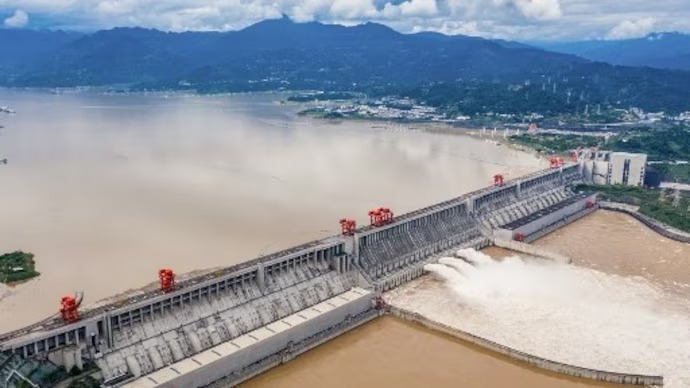 Image Source : India Today
Image Source : India Today
China has officially begun construction on what is set to become the world’s largest hydropower dam, located on the lower reaches of the Yarlung Zangbo River in Tibet. With an estimated investment of $170 billion, the project is being hailed by Premier Li Qiang as a “project of the century,” but it’s already stirring geopolitical and environmental concerns across South Asia.
Key Developments From the Groundbreaking
-
The dam will comprise five cascade hydropower stations and is expected to generate 300 billion kilowatthours annually—enough to power over 300 million people
-
Located near Nyingchi City, the site features a dramatic 2,000meter river drop over just 50 kilometers, offering immense hydropower potential
-
The project aims to meet China’s carbon neutrality goals and boost energy supply in Tibet and beyond
-
Construction is expected to drive demand for cement, explosives, and tunnel equipment, with related stocks surging in Chinese markets
Geopolitical and Ecological Concerns
-
India and Bangladesh, both downstream nations, have raised alarms over potential disruptions to water flow and livelihoods
-
NGOs warn of irreversible damage to the Tibetan Plateau’s rich biodiversity and seismic risks due to the dam’s location near tectonic fault lines
-
China has assured minimal impact on downstream water supplies and pledged ecological safeguards, though displacement figures remain undisclosed
Strategic Implications
The dam’s scale rivals the Three Gorges project and underscores China’s push for renewable dominance. However, its proximity to India’s border and the Brahmaputra’s transboundary nature make it a flashpoint for regional diplomacy and environmental scrutiny.
Sources: CNBC TV18, MSN India, Mathrubhumi, Business World, Indian Express, US News, Deccan Herald, The Straits Times
Advertisement
Advertisement



